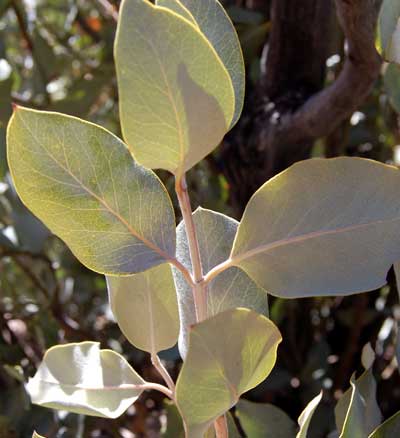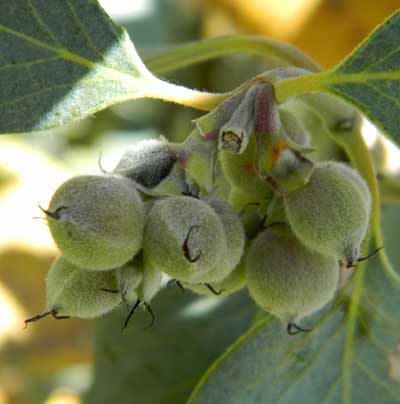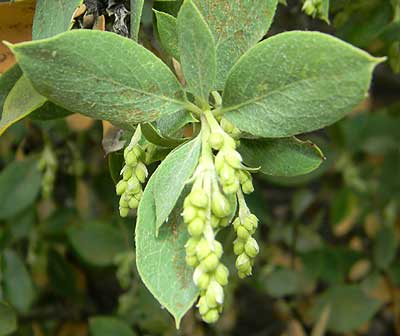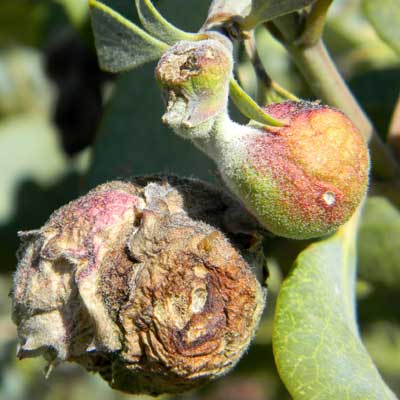Ashy Silktassel
Garrya flavescens

Foliage of Ashy-silk Tassel, Garrya flavescens as observed along Sycamore Creek in the Mazatzal Mountains, Maricopa Co., Arizona, USA. November 2008.
Sponsored Links:

Fruit of of Ashy-silk Tassel, Garrya flavescens as observed in the New River Mountains, Maricopa Co., Arizona, USA. 28 May 2011.
LEAVES: Thick, broadly oval, opposite leaves are tapered at both ends
and smooth on the margins. Under magnification the source of the ashy color is
reavealed as a fine layer of silvery, flattened scale-hairs.
FLOWERS: Pendulant spikes of small, non-showy flowers borne in twos or
threes within cup-like bracts open early spring. Each spike has both male (with
stamens) and female (with pistil) flowers.

Inflorescence of Ashy-silk Tassel observed at the first crossing of the East Verde River along Houston Mesa Rd., Gila Co., Az. July 2010.
SHRUB: A medium to large-sized evergreen shrub with usually multiple
stems from ground level plus branching freely above. Commonly
two meters tall.
RANGE: In Arizona this plant is typical of shrubby chaparral habitat,
but also occurs in patches within nearby habitats including sycamore woods. It
is not found in perennially wet soil. Adapted to occasional burning by
regrowing from underground rootstock.
FRUIT: Mature berry ripens to blue-black from green and contains usu.
two seeds.
UNARMED. Without thorns, but the stiff branches are tough to push
through.
Garryaceae -- Silktassel Family
More Information:
- Jepson Manual
- Southwest Environmental Information Network
- USDA Plant Profile
- ITIS Taxonomic Report
- Google Images
- Google Scholar Literature Search
Sponsored Link:

A number of plants were found in the New River Mountains, Maricopa Co., Arizona, USA, on 28 May 2011, with swollen, distorted shoots. These galls were caused by feeding within by larvae of an insect. So far, I have not successfully reared these for identification.